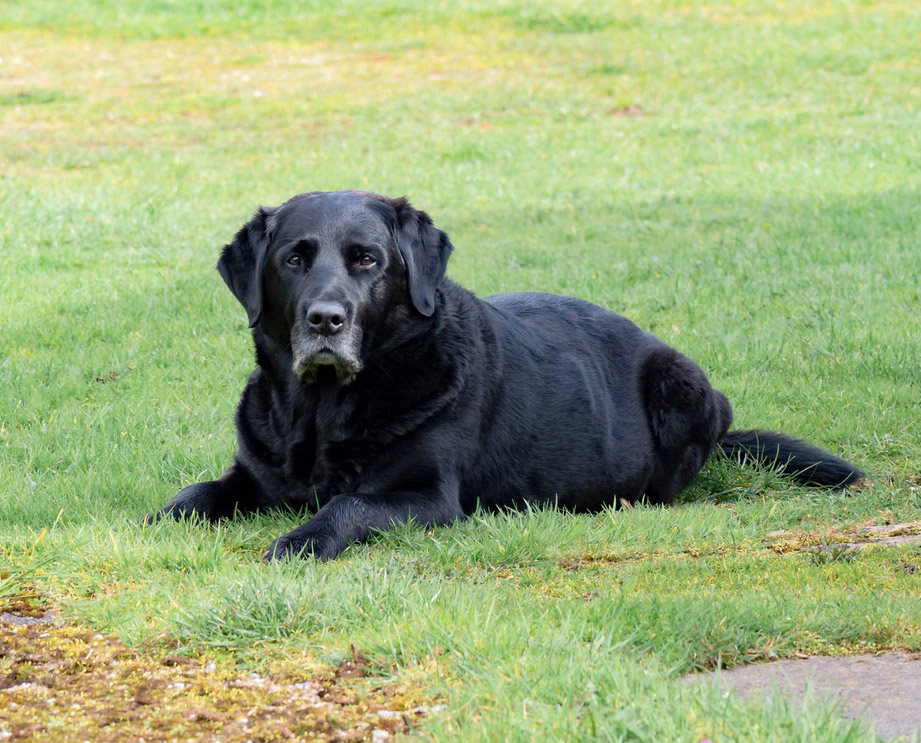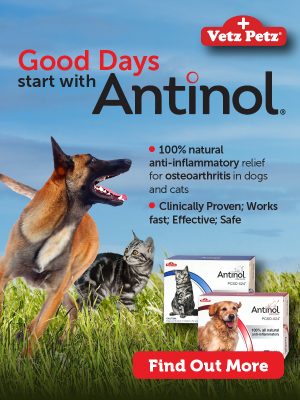Like humans, ageing is inevitable for our adorable critters. To meet the unique health needs of our dogs when they are elderly, we need to understand the ageing process and its observable signs, as well as know when a dog has become a senior.
For starters, the lifespan of a dog and the rate at which it ages depend on its breed and size. In general, small breeds mature more quickly in the first few years of life and live longer than large and giant breeds. For example, a smaller breed dog such as a Chihuahua would only enter the senior stage at around 11 to 13 years old, whereas a giant breed dog like a Great Dane would typically be considered a senior around 6.5 to 7.5 years old!
What does ageing mean for my pet?

Ageing is a gradual, irreversible, and inevitable process of the natural decline of a body’s organ functions. The body’s ability to synchronise the functions of its organ system also diminishes, and age-related dysregulation of its metabolism results in the excessive production of free radicals (oxidative stress), which then cause damage to cells and the immune system.
This is why ageing is often associated with a decline in physical condition, immune responses, organ function, and sensory and cognitive abilities, such as:
- Loss of muscle mass and strength
- Weight gain
- Elderly dogs require 30% to 40% fewer calories, so providing them with their usual daily food intake will lead to obesity
- Skin and coat changes such as
- The greying of the coat, starting from the face
- The coat becomes thinner and loses it sheen
- The skin becomes dry and loses its elasticity
- Joint changes
- With aging, limb joints undergo changes that make them less flexible. Cartilage, which is incapable of regeneration, begins to thin, dry out, and loses flexibility. The production of synovial fluid also decreases.
- These changes result in joints becoming stiff and less flexible.
- Bones become less dense and more fragile
- Changes in the composition of cartilage reduce its ability to cushion and absorb shock
- Ligaments and other connective tissues become less elastic and flexible with age
- Collectively, all these changes result in restricted joint movements
- A slowing down of the metabolic rate, resulting in reduced energy levels
- Increased susceptibility to disease
- Immunosenescence, also known as the gradual deterioration of the immune system brought on by natural age advancement, which leads to
- Increased vulnerability to disease, cancers, and autoimmune disease
- Decreased response to vaccines
- Chronic inflammation
- Vision and hearing impairment
- A mild decline in mental function such as some loss of memory and the ability to learn (but it is not enough to affect its daily functioning)
- Less adaptable to change, less able to handle stress
- Urinary incontinence
- Altered response to drugs, including anaesthetics.
Every dog ages differently, and oftentimes these signs are very subtle early on. This is why it may not be apparent to dog owners right away, especially since these signs of ageing can appear in any order, at varying rates of severity from dog to dog.
Distinguishing ageing from age-related diseases

Healthy ageing results in physical, mental, behavioural, and functional changes that become more evident in your dog’s senior years. These changes are subtle, and their impact on your pet’s ability to carry out its daily activities are minimal.
Coincidentally, this stage of life is also the time when chronic diseases begin to develop, or have already advanced to the point where they significantly impact your dog’s health! Unlike the changes of ageing, the changes due to chronic diseases will seriously affect your pet’s well-being, and even its longevity. Unfortunately, ageing dogs also often have comorbidities, which is when two or more diseases are happening concurrently.
Some of these age-related ailments include:
- Dental problems and/or gum and dental disease
- Heart disease
- Chronic renal disease
- Cancers
- Hormonal disorders (eg. Hypothyroidism, Cushing’s disease, and Diabetes mellitus)
- Geriatric vestibular disease
- Keratoconjunctivitis sicca (dry eyes)
- Canine cognitive dysfunction syndrome (dementia)
- Osteoarthritis
As a general rule of thumb, the signs of ageing should be mild, progress slowly, and have minimal impact on the dog’s ability to carry out its daily activities, as compared to age-related diseases. Never assume that our dogs are simply “getting old” — if you notice your dog behaving differently, as its caregiver, there are measures that you can take to give your faithful companion a happy and comfortable life in its golden years.
Caring for an ageing dog

Source: Roberto Nickson on Unsplash
1. Closely monitor your senior dog for signs of illness
Many dog owners mistake age-related diseases as the natural effect of ageing. To differentiate between the two, here are some signs of a disease, not natural ageing:
- An increase or decrease in appetite and thirst that persists for more than 2 days
- Sudden or drastic changes in weight
- Has an interest when food is presented but eats slowly, has difficulty picking up its food, and has markedly offensive breath
- Declining vision and changes in the eye i.e. dry eye, cloudiness
- Lumps and bumps in or below the skin (Fast growing or ulcerating skin growths warrant an immediate visit to the vet!)
- Persistent vomiting, diarrhoea, or coughing
- Persistent increase in thirst or increased frequency and/or volume of urination
- Difficulty getting up, unsteady gait, and difficulty going up and down stairs
- Urinary incontinence
- Changes in behavior i.e. irritable, has separation anxiety, displays aggression
- Cognitive dysfunction such as
- Loss of house-training
- Inability to recognise owners
- Changes in wake-sleep pattern
- Disinterest in interacting with people or with other dogs
- Excessive vocalisation
- Disorientation eg. confusion, staring blankly, and getting lost in the home
We recommend bringing your pet to the vet for a thorough health examination and diagnostic tests if you suspect that your pet is suffering from any of the symptoms above!
2. Provide support unique to your pet’s needs
A senior dog often has unique health needs that it didn’t use to require when it was much younger. Since it cannot verbally tell you what they are, it is best to consult your vet and work with him/her to implement measures that can improve the quality and comfort of your pet’s life.
These include dietary measures such as:
- Adjusting your dog’s diet to one that is appropriate for its senior years
- Managing your dog at its ideal weight and preventing obesity
- As dogs get older, their metabolic rate and activity decreases. Feeding a senior dog the same quantity of its regular food will result in weight gain from the accumulation of fat in the body.
- Obesity must be avoided as it is a risk factor for chronic heart, respiratory, and skin diseases and osteoarthritis, and is known to decrease a pet’s lifespan by up to 2 years.
- Your vet will be able to determine if your dog is obese by performing body condition scoring (BCS). To manage obesity, feed smaller quantities of your pet’s regular food, switch to a food with a lower energy density (reduced fat or fibre), or introduce foraging devices (eg. meal-dispensing feeders, food-filled toys).
- Preventing sarcopenia
- All aging dogs will lose muscle mass — even those that are healthy and have good appetites. This phenomenon is called sarcopenia, which results in the loss of muscle strength and function. To test for sarcopenia, your vet will have to do a muscle condition score (MCS).
- To manage sarcopenia, provide increased proteins that have good digestibility.
- Switching to therapeutic diets
- Therapeutic foods are specially formulated to help manage specific diseases for either a specific length of time or for the rest of the pet’s life. These are not meant for normal, healthy animals.
- Adding dietary supplements to its meals
- A high-quality silymarin given daily would be ideal for protecting the liver from oxidative stress.
- Omega-3 fatty acids derived from cold water marine animals have been clinically proven to have anti-inflammatory effects. Antinol is a lipid extract from New Zealand green lip mussels that is over 100 times more effective than omega-3 fatty acids and has clinically-proven benefits for osteoarthritis and other diseases that are caused by inflammation.
You should also be recommended to provide environmental support such as:
- Fresh water at several accessible locations
- Soft bedding
- Non-slip surfaces if your dog has difficulty getting up and lying down and has an unsteady gait (rugs are a good solution)
- Protection against major temperature fluctuations (because old dogs have less efficient temperature regulation mechanisms)
- Night lights and barriers if your dog has reduced vision.
In addition, it is important to:
- Provide mental stimulation
- Ensure that your dog gets an appropriate amount of physical activity
- Maintain good oral hygiene
- Help with grooming
- The loss of flexibility will make self-grooming increasingly difficult for your dog. Fecal and urine stains can cause skin burns and infections, overgrown nails make walking difficult and painful, and dirty ears and eye discharge puts your dog at risk of ear and eye infections.
3. Bring your dog for regular health check-ups
Make it a point to schedule regular health checks as an essential component of preventive care to ensure healthy and happy years for your senior dog. Typically, senior dogs should go for a health examination every 6 months because chronic disease can suddenly escalate.
In doing so, you increase the chances of detecting illnesses early, which then opens up more treatment and management options to slow down the progression of the disease and allow your dog to enjoy more years of quality living!
4. Work closely with your vet and the veterinary nurses
Have your vet and veterinary nurses be your go-to source for all matters concerning your dog’s health! The staff at veterinary clinics such as The Animal Clinic have the knowledge and training to provide science-based medical information that will keep your pet healthy, so if you ever need up-to-date care advice and medical recommendations, turn to your trusted vet and nurses. They will be more than happy to work with you!
Golden years for a golden companion

Source: Joshua Chun on Unsplash
Senior dogs are special. Throughout the years, they’ve given us all their love and companionship, remaining by our side steadfastly regardless of life’s ups and downs. To thank them for their unwavering devotion, it’s only fair that we pay special care and attention to their health, comfort, and happiness when they’re older and more dependent on us.
Incorporate these measures into your pet care routine to help your furry friend live a long and enjoyable life! Remember, every dog ages differently, so if you’re ever confused about whether your dog is simply ageing or suffering from something more, do not hesitate to give your vet a call.












